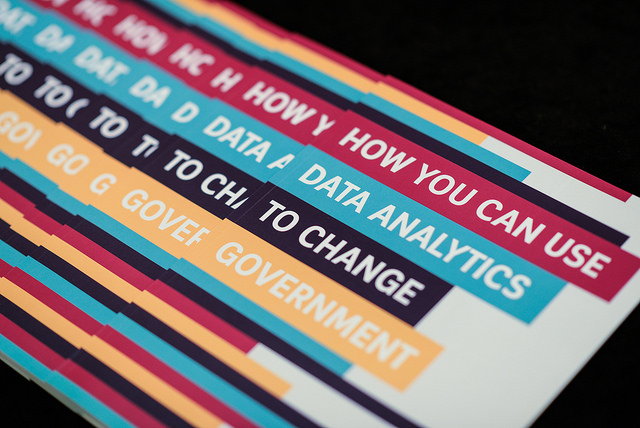Think back to when you were in school. You would approach your final exam thinking, “How on earth am I going to digest a semester’s worth of information for this one test?”
But you hopefully figured out that mass information had to be broken down into smaller categories. Without some semblance of organization, information can easily turn into information overload. The same is true for government data analytics, as it is in grade school exam preparation.
Clint Green, Chief Technology Officer at Ascolta (a ViON partner), and Denise Flanagan Director of Federal Systems Group at Information Builders, spoke at GovLoop’s event, “How to Understand Gov Data Analytics.” They explained how to organize and prioritize agency data, in order to become more data-driven.
“Becoming data-driven and interacting with data analytics can change the game for you and your constituents,” Green said.
It all starts with focusing on your overarching mission. “Your technology and infrastructure should not dictate your mission. You need to lead with the mission first,” Green emphasized. From there, Green suggests you ask yourself the following questions:
- Do you have the data you need to accomplish the mission? In other words, is the data specific and explicit enough to pursue the mission you are undertaking? Start simple. You can and will add new data sets over time.
- Do you have a question to ask of that data? This is where domain expertise is important. ScienceDirect defines domain expertise as including “insight regarding the sources and limitations of the data, operational requirements and constraints, and context.” It can tell you how to provide a clear question to develop the analytics (mission metrics, patterns of behavior, etc.).
- Do you have the ability to execute based on the answer?
You can produce myriad results and conclusions with one data set. But Green said to only focus on those results that directly feed into the success of your mission.
These questions can also help guide you to determine which type of data analytics is most appropriate to use in your case. Flanagan explained the four types of analytics –descriptive, diagnostic, predictive, and prescriptive – and provided examples of their successful application at various organizations and agencies.
Descriptive: This type of analytics is used to define what has happened. Every organization uses this type of analytics in one manner or another (i.e. through reports and scorecards).
Example: NYC Department of Health implemented a descriptive analytics application that tracked health code violations of restaurants in the city (there are over 40,000 restaurants). This was a public-facing app that provided citizens access to which restaurants held health code violations. Within the first year of the applications use, the rate of health code violations in restaurants went down by 30 percent.
Diagnostic: This type of analytics helps explain why something happened by identifying root causes and trends among data.
Example: The state of Louisiana’s Supplemental Nutrition Assistance Program (SNAP) needed to better track fraud, so they analyzed point of sale data from vendors. Through these findings, the program’s focus shifted from recipient to store owners who were abusing the system and making illegal trades. The project saved the state millions of dollars, allowed them to better fund their fraud analytic processes for the future, and ensured that those who needed the supplemental assistance would indeed receive it.
Predictive: This type of analytics determines what is likely to occur by leveraging scoring probability and machine learning.
Example: A federal debt collection agency was able to identify the debt that was most often collected and provided this information to the collection team. This new knowledge led to an increase in debt collection by 20 percent since implementation.
Prescriptive: This type of analytics outlines what should we do by offering data-based suggestions, correlation of predictive outcomes, and best responses.
Example: Raintree Oncology collected clinical data to produce an optimum treatment pathway for each of their patients, which led to improved patient outcomes.
Yet, even as you choose from these different data applications, our speakers concluded by encouraging us to remain flexible and open-minded when it comes to data analytics.
“Being data-driven is not a one-time event. Data is not a one-time use artifact,” Green said. You can continue to use the data collected and build off of it to maintain mission success.
And finally, don’t forget to transition your data into action. “Deployable analytics without action doesn’t change organizational performance. Deploy results to people who can impact change,” Flanagan said. You can and will change people’s lives with proper data analytics.
Click here for Flanagan’s Slides. Click here for Green’s Slides.
 |





Great article! I found this very reassuring and easy to communicate with our executives.
I would also personally add: Are you reviewing your data timely? Can you access it when YOU want to? If not, can you get to that point in the future?
Often times, data is fed downstream from a supervisor or via monthly, quarterly, semi-annual, annual reports, etc.. When you “wait” for someone to inform you of your data, it creates a “reactive” atmosphere. However, if you can access and view the data you generate more frequently (or as you want to), then you can become a more proactive leader and make necessary course corrections much earlier. This will enable you to investigate and make necessary course corrections (based on data) to improve your processes at intervals which you determine. Remember…if you don’t measure it, you cannot truly manage it.